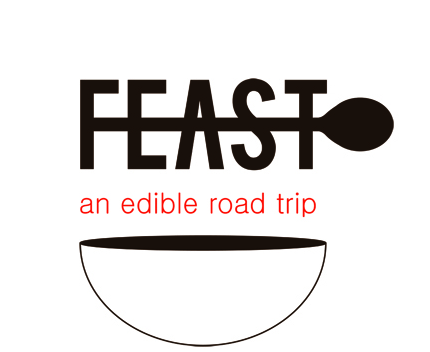FEAST on This #14: The Oldest Cheese in North America
Would you believe me if I told you we had one of our best meals while sitting in a McDonald’s parking lot? Have an open mind, and read on a little.
While traipsing around Orleans Island with Michelle, we discovered a style of cheese that dates back to 1635 on Orleans Island, the oldest (recorded) tradition of cheese-making in North America.
The practice has been preserved and passed down from generation to generation, and between 1940 and 1970, there were still 38 families on the island making cheese in this way.
In 2004, Les Fromages de l’Îsle d’Orléans opened up to commemorate and preserve the area's long history of cheese making. The cheese is produced and sold out of a shop featuring 17th century architecture and staff dressed in traditional garments.
There are three different types of cheese sold in the shop, which is the result of three different stages in the island’s traditional process of making cheese. Le Faisselle, a fresh cheese, is the first stage in the process, and only takes one day to make. The name refers to both the fresh cheese as well as the vessel needed to make it. The molds hold the milk and rennet mixture and have tiny holes from which the whey drains.
Some people like their Faisselle drier than others, so the container allows you to control how much moisture escapes. Faisselle with more whey produces a more yogurt-like texture, while less whey creates a crumbly, soft cheese. The texture is entirely unique, but is somewhere in between cottage cheese and thick yogurt. Our dessert at La Clocher Pencher consisted of a thick and creamy house-made Faisselle topped with berries and maple syrup.
Les Paillasson is the second stage in the cheese process. It is made by adding salt to the Faisselle and leaving it to dry for 3-4 days. The resulting cheese is a bit firmer and holds its shape in a flat, round puck, similar to Brie or Camembert, but without the thick rind. To serve, the cheese must be warmed on a skillet until the surface is golden brown. It doesn’t fully melt, but it becomes softer and more buttery-tasting.
Unfortunately we didn’t get to try the third stage of the cheese, La Raffiné, which is Les Paillasson that’s been cellar-aged for 28 days. During that time, it becomes a soft cheese with a crust.
We very quickly became passionate about Les Paillasson—this cheese completely won us over. A few days after our visit to the island, we could not stop thinking about it, and purchased a small wheel at a local shop to cook up at our B&B for dinner. Then our plans changed, and we ended up driving through dinnertime. Not willing to give up on our cheese dream, however, we did what any reasonable human beings would. We fired up the camp stove (thanks Canadian Tire!) in a dark McDonald’s parking lot, browned ourselves a serving of Les Paillasson - a cheese embodying nearly 400 years of Quebec history - and broke some fresh bread.
See? Pan-fried cheese + bread + grass to sit on + the ambient glow of the Golden Arches. How could we NOT call this one of the best meals of the trip?
-DV
